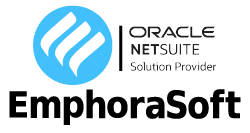
ERP Vendor Ecosystems: Maximizing Value Through Strategic Partnerships
In today’s complex business landscape, enterprise resource planning (ERP) systems have evolved far beyond standalone software applications. Modern ERP solutions now represent intricate ecosystems where multiple vendors, integrators, consultants, and technology providers collaborate to deliver comprehensive business solutions. Understanding how to navigate and leverage these ERP vendor ecosystems has become a crucial competitive advantage for organizations seeking to maximize their technology investments.
The Evolution of ERP Vendor Ecosystems
The ERP market has undergone a significant transformation over the past decade. What once began as monolithic, self-contained systems designed to handle core business processes has expanded into flexible platforms surrounded by complementary applications, services, and expertise. This evolution reflects both changing customer expectations and the practical limitations of single-vendor solutions.
From Monolithic to Ecosystem
Early ERP systems were typically developed and delivered by a single vendor attempting to address all business requirements through a unified platform. While this approach offered the advantage of simplified integration, it often resulted in compromises – certain modules might excel while others fell short of specialized needs.
As business complexity increased and technology advanced, the limitations of this approach became apparent. Organizations needed best-of-breed functionality in specific domains without sacrificing the benefits of an integrated system. Meanwhile, the rise of cloud computing, mobile technology, and API-driven architectures created new opportunities for interconnection.
This convergence of market demands and technological capabilities gave birth to today’s ERP vendor ecosystems – networks of partners working together to deliver comprehensive solutions that no single organization could provide alone.
The Current Landscape
Modern ERP vendor ecosystems typically feature:
- A core ERP platform provider establishing the foundation and framework
- Implementation partners specializing in deployment and customization
- Industry-specific solution providers addressing vertical market needs
- Technology partners offering complementary applications
- Infrastructure providers supporting cloud, security, and operational needs
- Service partners delivering ongoing support and optimization
These interconnected networks create value through specialization, allowing each participant to focus on their areas of expertise while contributing to a cohesive whole. For customers, this translates to solutions that better match their unique requirements without sacrificing integration benefits.
Why ERP Vendor Ecosystems Matter
The strategic importance of vendor ecosystems extends well beyond simple product features. Organizations that effectively leverage these networks gain significant advantages throughout the ERP lifecycle.
Enhanced Solution Capabilities
Even the most robust ERP platforms cannot excel in every business domain. By embracing ecosystem solutions, organizations access specialized functionality developed by partners focusing exclusively on particular business challenges. This “best of both worlds” approach delivers the integration benefits of a unified system alongside best-of-breed capabilities in critical areas.
For example, a manufacturing company might deploy a core ERP system for financial management, inventory, and basic operations, then extend it through ecosystem partners specializing in advanced production scheduling, quality management, or industry-specific compliance. The result is a comprehensive solution precisely aligned with business requirements.
Accelerated Innovation
Single vendors face inherent limitations in their ability to innovate across all functional areas simultaneously. Ecosystems, however, harness the creative potential of numerous organizations working in parallel. This distributed innovation model accelerates the pace of advancement, with specialized partners continuously pushing boundaries in their respective domains.
As ecosystem partners develop new capabilities, these innovations become available to the broader customer base through pre-built integrations and established partnership channels. Organizations benefit from this “innovation network effect” without managing multiple disconnected vendor relationships.
Risk Mitigation
Dependence on a single technology provider creates significant risk exposure. If that vendor struggles financially, falls behind technologically, or shifts strategic direction, customers may find themselves with limited options. Ecosystem approaches distribute this risk across multiple providers, creating resilience against disruption.
Additionally, ecosystems provide flexibility as business needs evolve. Organizations can adapt their solution components without wholesale replacement of the core platform, swapping or adding partners as requirements change. This modularity supports business agility and protects long-term technology investments.
Implementation and Support Advantages
ERP implementations remain among the most challenging technology initiatives organizations undertake. Ecosystem approaches offer advantages through specialized expertise – implementation partners with deep domain knowledge in specific industries or functional areas can navigate common pitfalls and accelerate time-to-value.
Post-implementation, these specialized relationships continue delivering benefits through targeted support services. Rather than relying on generalist assistance, organizations access expertise precisely matched to their unique challenges, often from partners with direct experience in their industry.
Key Components of an Effective ERP Vendor Ecosystem
Not all ecosystems deliver equal value. The most effective ERP partner networks exhibit several distinctive characteristics that separate them from loosely affiliated vendor groups.
Strong Core Platform Foundation
Successful ecosystems begin with a robust, extensible core platform. This foundation must provide:
- Comprehensive API capabilities supporting seamless integration
- Consistent data models enabling cross-application intelligence
- Scalable architecture accommodating growth and complexity
- Governance frameworks maintaining system integrity
- Development tools empowering partner innovation
The platform vendor typically establishes technical standards, certification processes, and architectural guidelines ensuring ecosystem solutions work together harmoniously. This governance role proves critical in preventing the fragmentation that undermines integration benefits.
Complementary Partner Selection
Strategic ecosystems carefully cultivate complementary partnerships rather than simply accumulating vendor relationships. Effective ecosystem architects identify capability gaps, market demands, and emerging technologies, then develop partnerships specifically addressing these opportunities.
This deliberate approach creates partner networks with:
- Minimal functional overlap reducing competition and confusion
- Comprehensive coverage across business requirements
- Balanced representation of both established and innovative providers
- Clear specialization and differentiation among participants
Organizations evaluating ERP solutions should examine not just current ecosystem composition but the strategic processes guiding partner selection and development.
Seamless Integration Architecture
The technical foundation connecting ecosystem components critically influences overall solution effectiveness. Leading ecosystems implement:
- Pre-built connectors reducing implementation complexity
- Standardized data exchange protocols ensuring consistency
- Real-time integration capabilities supporting process automation
- User experience integration providing seamless workflows
- Security frameworks maintaining protection across boundaries
These technical elements transform what might otherwise be a collection of loosely coupled applications into a cohesive business platform. The integration architecture often represents the most valuable intellectual property within the ecosystem, embodying accumulated knowledge about process flows, data relationships, and business logic.
Aligned Economic Incentives
Sustainable ecosystems create value for all participants – the platform provider, partners, and customers alike. This requires economic models that:
- Fairly distribute revenue based on value contribution
- Create partnership incentives aligned with customer success
- Support ongoing investment in integration and compatibility
- Reward specialization and excellence in specific domains
- Minimize channel conflict undermining collaboration
When examining ecosystems, organizations should investigate not just technical compatibility but these economic foundations. Partnerships lacking sustainable economic models often deteriorate over time, regardless of initial technological promises.
Collaborative Governance
Effective ecosystems implement governance structures balancing standardization with innovation. These frameworks typically include:
- Clear certification requirements ensuring solution quality
- Shared roadmap processes coordinating development efforts
- Dispute resolution mechanisms addressing inevitable conflicts
- Communication channels facilitating knowledge sharing
- Collective marketing initiatives amplifying market presence
Through these structures, ecosystem participants collaborate on strategic direction while maintaining individual differentiation. The resulting tension between standardization and innovation drives continuous improvement across the network.
Strategies for Maximizing Value from ERP Vendor Ecosystems
For organizations implementing or managing ERP solutions, several strategies can enhance the value derived from vendor ecosystems.
Adopt an Ecosystem Mindset
Traditional vendor management approaches focused on extracting maximum value from individual supplier relationships often prove counterproductive in ecosystem contexts. Organizations must shift toward partnership models that:
- Consider total ecosystem value rather than discrete transactions
- Evaluate outcomes across the entire solution landscape
- Balance competitive pressure with collaborative opportunity
- Recognize interdependencies among ecosystem participants
- Cultivate knowledge sharing across organizational boundaries
This mindset shift represents perhaps the most fundamental change required for ecosystem success. Organizations that continue treating interconnected partners as isolated vendors inevitably undermine the collaborative potential of the network.
Develop Ecosystem Architecture Capabilities
As ecosystems grow more complex, the ability to design and manage these networks becomes a distinct organizational competency. Leading organizations develop internal capabilities for:
- Mapping business requirements to ecosystem components
- Evaluating partnership opportunities against strategic needs
- Assessing integration complexity and compatibility
- Managing data flows across ecosystem boundaries
- Governing the overall solution architecture
These capabilities often reside within enterprise architecture functions but require broader perspective than traditional technology-focused roles. Successful ecosystem architects blend technical knowledge with business insight and relationship management skills.
Implement Structured Partner Evaluation Processes
The proliferation of ecosystem options creates decision complexity. Organizations need systematic approaches for evaluating potential partners, including:
- Capability assessment frameworks matching solutions to requirements
- Financial viability analysis ensuring long-term sustainability
- Cultural alignment evaluation supporting effective collaboration
- Technical compatibility verification confirming integration potential
- Reference validation confirming real-world performance
These processes should balance immediate functional requirements against long-term strategic considerations. The ecosystem partner selected today may influence technology options for years to come, making thorough evaluation essential.
Balance Standardization and Customization
Ecosystem solutions offer unprecedented customization potential through component selection and configuration. However, excessive customization can undermine standardization benefits and create integration challenges. Organizations must develop governance models that:
- Identify appropriate customization boundaries
- Standardize core processes supporting integration
- Allow flexibility where differentiation creates value
- Manage technical debt associated with customizations
- Maintain upgrade paths despite modifications
This balance requires ongoing governance rather than one-time decisions. As business needs evolve and ecosystem offerings mature, the appropriate boundaries between standardization and customization continuously shift.
Invest in Relationship Management
Successful ecosystem participation requires relationship management capabilities extending beyond traditional vendor oversight. Organizations should develop:
- Multi-level engagement models connecting appropriate stakeholders
- Joint governance structures aligning roadmaps and priorities
- Shared success metrics measuring collective outcomes
- Escalation processes addressing inevitable challenges
- Knowledge transfer mechanisms maximizing solution value
These relationship investments generate returns through better alignment, faster problem resolution, and earlier access to innovation. Organizations that treat ecosystem partners as strategic allies rather than transactional vendors realize significantly greater value.
Industry-Specific Ecosystem Considerations
While ecosystem principles apply broadly, their implementation varies significantly across industries. Organizations should consider these sector-specific factors when developing ecosystem strategies.
Manufacturing
Manufacturing operations typically involve complex process orchestration across production, supply chain, quality, and maintenance functions. Effective manufacturing ecosystems often feature:
- Shop floor integration specialists bridging IT/OT boundaries
- Quality management solutions addressing compliance requirements
- Supply chain visibility partners enhancing logistics coordination
- Product lifecycle management extensions supporting engineering processes
- Industry 4.0 enablers facilitating smart manufacturing initiatives
Manufacturing organizations should evaluate ecosystem completeness across the production value chain rather than focusing exclusively on back-office capabilities.
Retail and Distribution
Retail ecosystems increasingly extend beyond traditional ERP boundaries to encompass customer experience, omnichannel commerce, and advanced logistics capabilities. Key ecosystem considerations include:
- E-commerce platform integration enabling seamless transactions
- Order management specialists supporting complex fulfillment scenarios
- Customer experience solutions providing consistent engagement
- Merchandise planning partners optimizing assortment decisions
- Last-mile logistics providers enhancing delivery options
Retail organizations should examine how potential ecosystems bridge operational and customer-facing domains, creating unified commerce experiences.
Professional Services
Services organizations require ecosystems supporting project delivery, resource optimization, and knowledge management. Effective service industry ecosystems typically include:
- Professional services automation extending core ERP capabilities
- Resource management specialists optimizing utilization
- Knowledge management solutions capturing intellectual capital
- Client relationship platforms enhancing engagement
- Project portfolio management tools improving delivery governance
Services firms should evaluate how ecosystem components support their specific delivery methodology and client engagement model.
Financial Services
Financial institutions operate under intensive regulatory scrutiny and face unique data security challenges. Their ecosystem requirements often include:
- Regulatory compliance partners addressing specific mandates
- Risk management specialists enhancing governance capabilities
- Customer identity solutions supporting authentication requirements
- Fraud detection providers implementing advanced protection
- Reporting partners automating regulatory submissions
Financial services organizations must carefully evaluate ecosystem security models, data governance, and compliance capabilities beyond standard functionality.
Healthcare
Healthcare ecosystems must bridge clinical, financial, and operational domains while addressing strict regulatory requirements. Key considerations include:
- Clinical system integration specialists enabling unified workflows
- Revenue cycle management partners optimizing reimbursement
- Compliance solutions addressing healthcare-specific regulations
- Patient engagement platforms enhancing service delivery
- Analytics providers supporting population health initiatives
Healthcare organizations should examine ecosystem capabilities related to protected health information handling, clinical workflow integration, and regulatory documentation.
Evaluating and Selecting ERP Ecosystem Partners
Choosing the right ecosystem represents one of the most consequential technology decisions organizations make. This selection process should include several key evaluation dimensions.
Strategic Partnership Approach
Organizations should assess how platform vendors structure their partner programs and ecosystem development activities. Key questions include:
- Does the vendor maintain clear partner certification standards?
- How does the vendor resolve conflicts among ecosystem participants?
- What governance mechanisms coordinate ecosystem development?
- How does the partner program incentivize quality and innovation?
- What resources does the vendor invest in ecosystem enablement?
The answers reveal much about ecosystem maturity and long-term sustainability. Organizations should prioritize vendors demonstrating strategic commitment to ecosystem development rather than treating partnerships as merely transactional relationships.
Integration Architecture and Technology
The technical foundation supporting ecosystem integration significantly impacts implementation complexity and ongoing maintenance requirements. Evaluation criteria should include:
- API completeness covering required business processes
- Integration standardization reducing custom development
- Real-time capabilities supporting process automation
- Data governance ensuring consistency across boundaries
- Security models protecting information throughout the ecosystem
Organizations should carefully examine both current integration capabilities and architectural direction, as ecosystem connectivity requirements typically increase over time.
Partner Network Composition
The specific makeup of the partner ecosystem directly influences solution capabilities and implementation experience. Assessment should consider:
- Industry-specific partner presence matching organizational requirements
- Geographic coverage aligning with operational footprint
- Size diversity supporting various implementation approaches
- Specialization depth addressing complex requirements
- Innovation balance including both established and emerging providers
Organizations should look beyond simple partner counts to evaluate ecosystem quality and relevance to their specific needs.
Implementation Experience and Methodology
Ecosystem implementation complexity often exceeds single-vendor deployments, making experience and methodology particularly important. Evaluation should examine:
- Proven multi-vendor implementation methodologies
- Cross-partner governance models ensuring coordination
- Integration experience with specific ecosystem components
- Reference implementations in similar industry contexts
- Knowledge transfer approaches building internal capabilities
Organizations should seek partners with demonstrated success implementing similar ecosystem configurations rather than those learning through trial and error.
Ongoing Support and Optimization
Post-implementation support becomes more complex in ecosystem environments, requiring coordination across multiple parties. Support evaluation should include:
- Clear responsibility delineation avoiding accountability gaps
- Integrated incident management processes
- Cross-partner escalation procedures
- Coordinated release management minimizing disruption
- Continuous improvement mechanisms optimizing overall solutions
Organizations should establish explicit support expectations and governance mechanisms before implementation rather than addressing these critical elements reactively.
The Future of ERP Vendor Ecosystems
As technology continues evolving, ERP ecosystems will transform in several important directions, creating new opportunities and challenges for organizations.
AI and Intelligent Automation
Artificial intelligence capabilities are rapidly becoming central to ERP value propositions. Within ecosystems, AI drives several emerging trends:
- Cross-application intelligence leveraging broader data access
- Specialized AI partners focusing on specific business domains
- Democratized machine learning reducing technical barriers
- Intelligent automation spanning ecosystem boundaries
- Cognitive services enhancing traditional business processes
Organizations should evaluate ecosystem AI strategies comprehensively, examining both embedded intelligence and partner-delivered capabilities.
Composable Architecture Acceleration
The movement toward composable business applications continues gaining momentum, with significant implications for ecosystem design. Key developments include:
- Packaged business capabilities replacing monolithic modules
- Low-code/no-code platforms enabling citizen development
- API marketplaces facilitating component discovery
- Microservices architectures supporting fine-grained integration
- Event-driven designs enabling real-time responsiveness
These architectural shifts will likely accelerate ecosystem expansion while reducing integration complexity, creating opportunities for specialized solutions addressing specific business needs.
Vertical Market Ecosystems
While horizontal ERP platforms maintain importance, industry-specific ecosystems increasingly deliver differentiated value. This verticalization manifests through:
- Industry cloud platforms providing sector-specific foundations
- Regulatory and compliance solutions addressing vertical requirements
- Specialized analytics addressing industry-specific metrics
- Pre-configured industry processes reducing implementation effort
- Community knowledge sharing among similar organizations
Organizations should evaluate both horizontal and vertical ecosystem options, considering how these approaches might complement each other in addressing specific requirements.
Marketplace Evolution
Traditional partner programs continue evolving toward digital marketplace models that transform how organizations discover, evaluate, and deploy ecosystem solutions. Key marketplace developments include:
- Self-service discovery tools facilitating partner identification
- Standardized contracting streamlining procurement
- Usage-based pricing models reducing implementation barriers
- Customer review systems enhancing selection transparency
- Automated deployment accelerating time-to-value
These marketplace capabilities reduce friction in ecosystem participation, potentially expanding both the range of available solutions and the diversity of organizations leveraging them.
Sustainability and Responsible Technology
Environmental, social, and governance considerations increasingly influence technology decisions. Ecosystem implications include:
- Carbon footprint optimization across partner solutions
- Supply chain transparency extending through technology providers
- Ethical AI governance spanning ecosystem boundaries
- Accessibility compliance throughout integrated experiences
- Privacy protection across data-sharing relationships
Organizations should incorporate these considerations into ecosystem evaluation, recognizing their growing importance to stakeholders and regulatory compliance.
Conclusion: Building Your ERP Ecosystem Strategy
Maximizing value from ERP vendor ecosystems requires deliberate strategy rather than reactive decision-making. Organizations embarking on ecosystem journeys should:
- Begin with business capability mapping identifying critical requirements
- Develop clear integration architecture guiding ecosystem connectivity
- Establish partner evaluation frameworks aligning selection with strategy
- Implement governance mechanisms ensuring ongoing coordination
- Build internal capabilities supporting ecosystem management
- Create measurement systems quantifying ecosystem value realization
The effort invested in strategic ecosystem development yields substantial returns through enhanced solution capabilities, accelerated innovation, and improved business agility. As technology continues evolving toward more distributed, specialized models, ecosystem competency will increasingly differentiate leading organizations from digital laggards.
By approaching ERP vendor ecosystems strategically rather than opportunistically, organizations position themselves to harvest the full potential of these powerful collaborative networks. The future belongs not to organizations with the largest technology budgets or the most advanced individual systems, but to those most adept at orchestrating ecosystems of capabilities precisely aligned with their unique business requirements.
FAQ's
An ERP vendor ecosystem is a network where a core ERP platform provider collaborates with implementation partners, industry-specific solution providers, technology partners, and service partners. Together, they deliver comprehensive, best-of-breed solutions that extend beyond a single-vendor offering.
Early ERP systems were standalone and often struggled to meet every specialized business need. Over time, the market shifted toward ecosystems where multiple vendors and partners contribute specialized functionalities, enabling organizations to achieve higher integration, innovation, and overall value.
Strategic partnerships allow organizations to access complementary expertise and specialized solutions that a single vendor cannot offer alone. These partnerships enhance capabilities, accelerate innovation, and provide flexible options to adapt to changing business requirements while mitigating risks.
Effective ecosystems are built on a strong core platform with comprehensive APIs, consistent data models, scalable architecture, and governance frameworks. They also rely on carefully selected, complementary partners and seamless integration architectures to ensure cohesive, reliable solutions.
By distributing technology and support responsibilities among multiple specialized partners, ecosystems reduce dependency on a single provider. This diversified approach lessens risks related to vendor strategy shifts, financial instability, or technological obsolescence, while offering flexibility to swap or add partners as needs evolve.
Ecosystems bring specialized expertise and deep domain knowledge to ERP implementations, helping avoid common pitfalls and accelerating time-to-value. Post-implementation, targeted support from dedicated partners ensures that organizations receive focused assistance aligned with their unique industry requirements.
Successful ecosystems establish economic models that fairly distribute revenue, encourage shared risk and reward, and incentivize ongoing investment in integration and compatibility. This alignment ensures that every partner benefits from collective success, fostering long-term collaboration.
Key evaluation criteria include the ecosystem’s partner composition, the robustness of its integration architecture, the vendor’s governance and certification processes, and how well the ecosystem aligns with the organization’s strategic needs and risk management strategies.
Ecosystems accelerate innovation by enabling distributed R&D across multiple partners. As each partner focuses on their area of expertise, organizations benefit from continuous enhancements, pre-built integrations, and new functionalities that combine to create a tailored, high-value solution.
Organizations should adopt an ecosystem mindset by looking beyond transactional vendor relationships. Key strategies include mapping business capabilities to partner strengths, implementing robust integration and governance frameworks, and continuously monitoring performance with clear KPIs to ensure alignment with long-term business goals.







